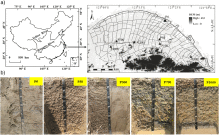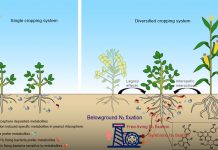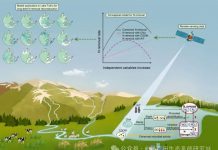Huang LM, Jia XX, Zhang GL, Aaron Thompson, Huang F, Shao MA, Chen LM. Variations and controls of iron oxides and isotope compositions during paddy soil evolution over a millennial time scale. Chemical Geology, doi: 10.1016/j.chemgeo.2017.11.030
Abstract
A paddy soil chronosequence consisting of five profiles derived from calcareous marine sediments with cultivation history from 0 to 1000 years was studied to understand the underlying mechanisms and processes controlling the millennial scale Fe evolution. We evaluated the chronosequencial changes in depth distribution of Fe oxide contents and Fe isotopic compositions. Results showed that paddy soil evolution under the influence of periodic flooding and groundwater fluctuation resulted with time in variations of soil moisture regime and redox condition that control Fe mobilization, translocation and redistribution, leading to enhanced profile differentiation of Fe oxides and measurable Fe isotope fractionation. Total Fe and oxide bound Fe as well as their differentiation between surface and subsurface horizons increased as paddy soils age, leading to the formation of diagnostic horizons and features characterizing Fe distribution and redistribution. Selective extractions showed that the weakly-bound, oxide-bound and silicate bound Fe corresponded to 1–16%, 8–46%, and 52–91% of the total Fe, respectively, and these proportions varied with both time and depth due to the redox-related Fe transformation and translocation. δ56Fe values in the studied paddy soil chronosequence ranged from − 0.01‰ to 0.18‰ and exhibited a strong negative correlation with the logarithm of total Fe concentrations, suggesting mass-dependent Fe isotope fractionation occurred as a result of the preferential removal of lighter Fe isotopes during long-term paddy soil evolution under the predominant reducing conditions. However, the Fe isotopic ratio of a specific paddy soil horizon was a result of a complex interaction of different processes, which were summarized and interpreted in our proposed conceptual model. Comparison of Fe isotopic compositions in the worldwide soils demonstrated that Fe isotopes can evidence Fe transfer and pinpoint the factors and processes that control Fe mobilization and redistribution particularly in soils with changing moisture regimes and redox conditions. Our findings provide new insights into the behavior and geochemical cycle of Fe at the Earth’s surface strongly affected by human activities and contributes to an improved understanding of how anthropedogenesis affects Fe evolution in the Earth’s Critical Zone.








